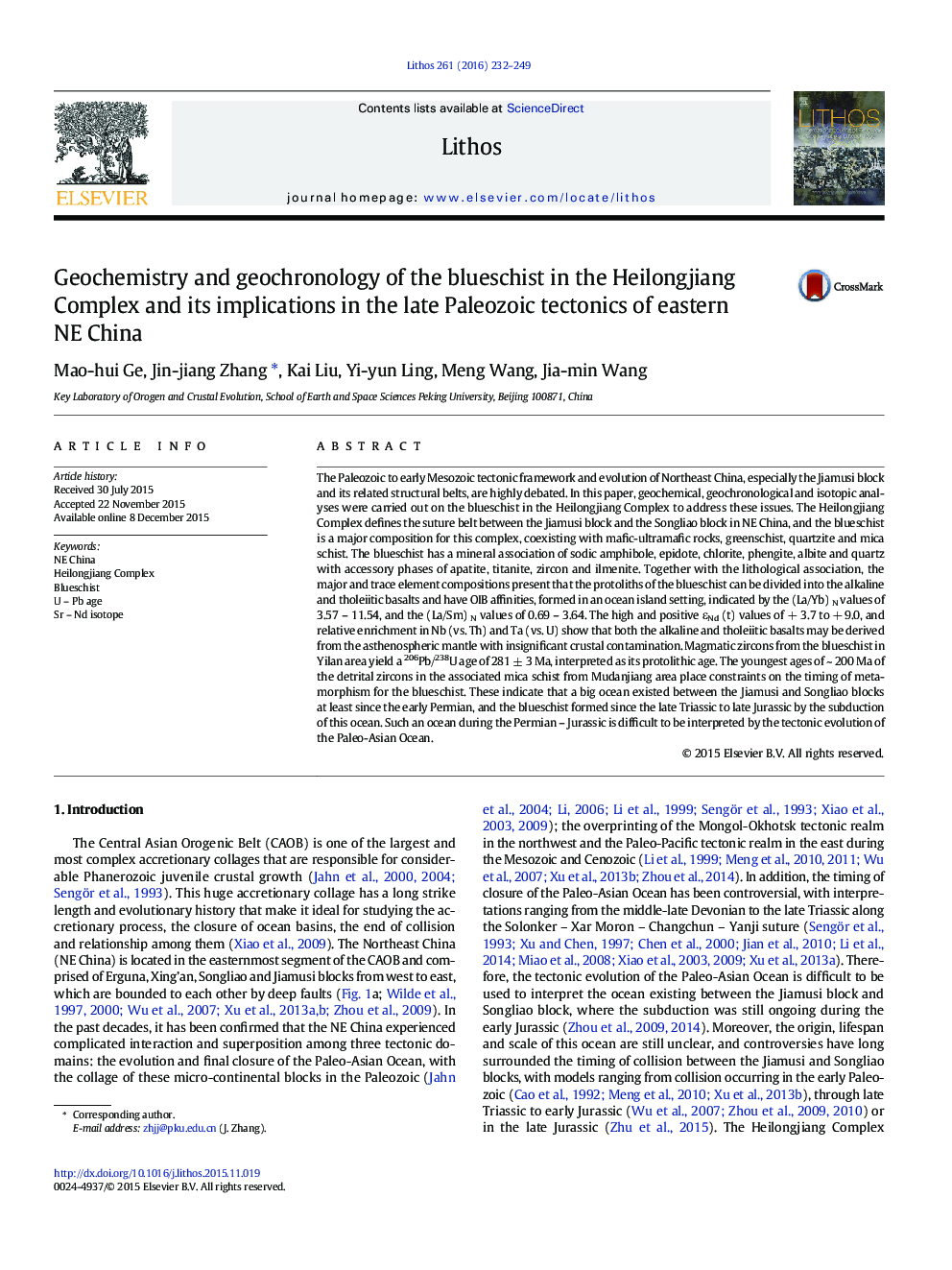| Article ID | Journal | Published Year | Pages | File Type |
|---|---|---|---|---|
| 4715557 | Lithos | 2016 | 18 Pages |
•The protolith of the blueschist in the Heilongjiang Complex has an affinity to OIB•The OIB was generated at ~ 280 Ma and subducted after 200 Ma•The OIB represents a big ocean that may be a part of the Paleo-Pacific realm
The Paleozoic to early Mesozoic tectonic framework and evolution of Northeast China, especially the Jiamusi block and its related structural belts, are highly debated. In this paper, geochemical, geochronological and isotopic analyses were carried out on the blueschist in the Heilongjiang Complex to address these issues. The Heilongjiang Complex defines the suture belt between the Jiamusi block and the Songliao block in NE China, and the blueschist is a major composition for this complex, coexisting with mafic-ultramafic rocks, greenschist, quartzite and mica schist. The blueschist has a mineral association of sodic amphibole, epidote, chlorite, phengite, albite and quartz with accessory phases of apatite, titanite, zircon and ilmenite. Together with the lithological association, the major and trace element compositions present that the protoliths of the blueschist can be divided into the alkaline and tholeiitic basalts and have OIB affinities, formed in an ocean island setting, indicated by the (La/Yb) N values of 3.57 – 11.54, and the (La/Sm) N values of 0.69 – 3.64. The high and positive εNd (t) values of + 3.7 to + 9.0, and relative enrichment in Nb (vs. Th) and Ta (vs. U) show that both the alkaline and tholeiitic basalts may be derived from the asthenospheric mantle with insignificant crustal contamination. Magmatic zircons from the blueschist in Yilan area yield a 206Pb/238U age of 281 ± 3 Ma, interpreted as its protolithic age. The youngest ages of ~ 200 Ma of the detrital zircons in the associated mica schist from Mudanjiang area place constraints on the timing of metamorphism for the blueschist. These indicate that a big ocean existed between the Jiamusi and Songliao blocks at least since the early Permian, and the blueschist formed since the late Triassic to late Jurassic by the subduction of this ocean. Such an ocean during the Permian – Jurassic is difficult to be interpreted by the tectonic evolution of the Paleo-Asian Ocean.
